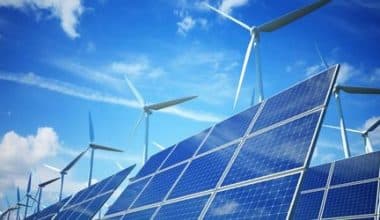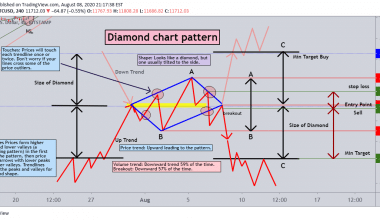Investing in a vacant lot or plot of land might be a very wise decision. The land may also provide you with a lot of opportunities to generate a consistent stream of income. To a large extent, you may not even need to do anything with the property to return your initial investment if you buy the “perfect” land. You can also decide if you want to build on the unimproved land. This article will guide you through what you need to know about buying unimproved land and the loan rates on its sale. Also whether or not you can build on the unimproved land you purchased.
What Is Unimproved Land?
In real estate, “unimproved” land is land that lacks certain fundamental facilities, such as power, telephone service, street access, or the provision of water supplies. Despite its accessibility via concrete or dirt road, the absence of electricity and telephone can sometimes qualify a property as unimproved in many different listing systems.
Unimproved land is basically a blank canvas on which you can develop whatever you want, as long as you follow zoning and building codes.
Is Buying Unimproved Land a Good Idea?
Buying unimproved land is not a good choice if you do not have the funds or time to deal with unforeseen challenges. Because these abandoned lots lack utilities and street access, you will face costly and time-consuming roadblocks.
Unimproved Land Loan
Mortgages and unimproved land loans are not the same. Lending institutions do not treat land loans in the same way as they do home mortgages. There is substantially less danger when a lender finances a home. If a borrower fails to repay the land loan, a property with a house is much easier to sell than an empty lot. Some lenders ask for a down payment of up to 50% to cover the higher risk of unimproved land.
While unimproved land loan rates are not as difficult to obtain as a raw land advance. They might be difficult to achieve. So make sure you have a precise plan, a significant down payment, and a good FICO credit score. Because unimproved land credits aren’t the riskiest type of loan a lender can provide. The upfront payments and financing expenses won’t be out of this world. However, it is not unusual for them to be greater than other types of financing loans. That is how unimproved land loans work.
How Much of a Loan Can I Get for Land?
There are no hard and fast laws on how much you can borrow with a land loan. Although Land loan amounts can vary depending on the type of land you’re buying and the mortgage lender you’re working with.
For example, one lender may assist you in financing up to 85% of the cost of developed land or 70% of the cost of unimproved land. Keep in mind that how much you can borrow is strongly connected to how much cash you have and can put down on the deal.
What Is the Difference Between Improved and Unimproved Property?
Unimproved property is a cheap way to buy land for your future home, business, or farm because it doesn’t have any services. Improved land is land that is close to utilities and other services.
Unimproved Land Loan Rates
Considering the fact that land loans can be risky at times, lenders prefer to charge higher interest rates. Up to 5% or 6%, to name a few examples. You could end up paying higher land loan rates depending on the home, your down payment, and your creditworthiness. Since these land loan rates are typically more expensive, it is critical that you spend your time comparing different lenders before deciding on one. Unimproved land loan interest rates are typically higher than home loan interest rates. With a higher credit score and a smaller DTI ratio, you are more likely to qualify for cheaper rates.
Rates of land loans however vary depending on the type of property and the length of the loan. Below are land loan rates you can get
Unimproved Lot-Land Loan Rates
- 10 years fixed: 4%-5%
- 15-year fixed term: 4.30 – 5.30 %
- 20-year fixed term: 4.60 to 5.60 percent
- Fixed 30-year term: 4.65 to 5.65 percent
Unimproved Land for Exploration/Recreation Loan Rates
- 10-year fixed: 4.25 to 5.25 percent
- 15-year fixed: 4.55 to 5.55 percent
- 20-year fixed: 4.85 to 5.85 percent
- 30-year fixed: 4.90% – 5.99%
Buying Unimproved Land
When buying a type of land, it is vital to determine whether the plot is improved or unimproved. You can identify unimproved land by the absence of amenities and facilities such as power, water, telephone, or even road access. These plots are just large, open tracts of land. Any form of structure would necessitate a significant amount of labor, however, some have provisions in place to make construction easier. Unimproved land typically sells for a low price.
When investing in real estate or buying unimproved land, it is vital to consider the land value when deciding on a location.
Land values may fall as you move further away from the Central business district (CBD). This is because the land near the CBD is more limited, more valuable, and more readily accessible. As a result, the value of unimproved land is often higher.
There can be a lot of available land further away from the CBD, and it can be in a less convenient location. Hence property values are lower.
When evaluating sites, we consider the land-to-asset ratio. This is expressed as a percentage of the purchasing price. You can as well do your research before purchasing any type of land.
Try To Investigate:
- Zoning – Can you use the house in the manner you desire?
- Are there any easements on the property?
- Is there sufficient cellphone coverage?
- What is the soil’s condition?
- Is there a risk of flooding?
- Is the land suitable for a septic system and a well?
- What farms and other commercial enterprises are in the area?
Can You Build on Unimproved Land?
You can do whatever you want with unimproved land. You can have your house right in the middle of the parcel if you wish. If you like, you might construct a chain of interconnecting cabins instead of a house. It’s your land, and you can lay it out any way you like within the confines of your community. You can use the land to construct a house or other property, then live there or rent it out to other renters. Some commercial estates permit the construction of many modest buildings or bigger single complexes.
If you don’t intend to do anything with the land, you can keep the title as an investment. However, you can allow your investment to grow in value before selling it for a tidy profit. You may be able to buy and sell the home without ever seeing it in reality. Furthermore, you can decide to build on an unimproved land or use it for:
- When property values begin to rise, you should consider holding and reselling.
- Creating a dream home
- Building a rental or marketable investment property
- Build a private community or a private grouping of residences
- Create a park and surrounding area to give back to your community
So, if you’re considering whether or not to invest money or build on unimproved land. The answer will depend on your circumstances.
Does Unimproved Land Depreciate?
Due to the absence of services, purchasing unimproved property for your future home, company, or farm is a cost-effective option. Improved land refers to land with readily available utilities and services.
Unimproved Land for Sale
If you need assistance finding unimproved land for sale, you can always call a local real estate agent and ask them to compile a list of possible properties depending on your property preferences. A licensed realtor has access to the MLS (Multiple Listing Service) systems, so you’ll get a weekly or biweekly update on what’s available, new listings, and houses that have sold. They may also assist you in sorting out financing choices so that you have a better understanding of how to pay for your property. Furthermore, realtors are typically compensated for the sale of unimproved land or property. This implies that as a land buyer, you are not throwing out any cash to entice them to join you in your hunt!
Another alternative is to enroll in an unimproved land listing service for sale. For a monthly subscription, they will present you with a list of unimproved land for sale based on your search criteria.
The main issue with this approach is why would you pay for land listings that you can simply access for free? They may give fluff qualifiers like “saving oneself time,” “suggestions for how to use the land,” and so on. However, looking for Unimproved land for sale is part of the buying process. Comparing listings and properties is an important element of your search since it allows you to properly grasp where you want to reside for the remainder of your chosen time frame.
The third and possibly best option is to jump right in and conduct your own online unimproved land for sale options. The best thing is that you can hunt for the ideal house on your own time, including nights, weekends, and vacations.
Advantages of Buying Unimproved Land
There are numerous advantages to buying unimproved land to either sale or build on. Here are a few to think about.
#1. Flexibility
Undeveloped land is a blank slate that you can use or build on. That means you can use it whatever you (legally) want and develop it from the ground up to your exact specifications. As long as they comply with local zoning restrictions. Because nothing is on the property, you won’t have to argue over what is a deal-breaker and what you can “live with.”
2. Fewer Maintenance Costs
Buying unimproved land without structures means there will be less to maintain. The typical cost of owning a home includes upkeep and repairs on items such as appliances and key home systems. These typically amount to about 1% – 3% of the home’s purchasing price. There is no HVAC, plumbing, or roof to replace or repair on unimproved land. The only thing that you must preserve is the land. Remember that you will need to keep up with financial maintenance such as property taxes and insurance.
#4. There is less competition
When it comes to buyer competition, unimproved land may be easier to acquire than a standard single-family home. Many buyers want to be able to move in straight away. They don’t want to cope with the stress that comes with building a home. Also, they don’t want to plan out a complete home of their own in the first place. Many people are unable to wait so long to move in. With the current state of the property market in high demand and tight inventory. Purchasing land and avoiding the competition could be a wise choice if you have the time to wait.
#5. Potential Return on Investment
The land’s resources are scarce. There is just so much room on this planet. As a result, as the population rises and space becomes tighter. The cost of land may rise over time. Unimproved land has the potential to be a good investment.
Disadvantages of Buying Unimproved Land
When it comes to purchasing raw property, you’ll want to do your research in terms of local legislation, as well as the cash and time necessary to finish the transaction. These are some of the disadvantages of purchasing undeveloped land, especially if you are not prepared for them.
#1. Increasing Down Payment
The down payment for improved land is normally between 15% and 25% of the purchase price. However, this average does not apply to raw land because the lender is exposed to greater risk. The lender may not have a firm guarantee for the investment because the land isn’t ready for construction. Also, there may not be precise plans to build or use the land just yet. Raw land is more of a “TBD” – to be decided – investment. As a result, you should anticipate making a bigger down payment on the loan, up to roughly 50%.
#2. Zoning Restrictions
Zoning rules govern the use of certain parcels of land. They can vary depending on geography and may limit or ruin your primary purpose for the land. Before purchasing unimproved land, examine the zoning rules in the region. Try visiting the department of city planning or another local government office. They may also be available at the library or on the city’s website.
#3. Permitting Costs
Permits are proof of a local government’s official approval to build or carry out another action on a piece of property. To build a house on unimproved land, you may need to obtain a number of licenses. Septic, well, driveway, and building permits are examples of these.
#4. Easements
An easement grants another individual or groups the right to access the property for a clear purpose. You’ll want to make sure there are no easements on the land. However, if there are easements and you’re okay with it and that it won’t interfere with your plans for the site. You’ll also want to make sure the unimproved land you’re considering buying isn’t landlocked, which means it’s bordered by other people’s property and lacks access to things like a main road or utilities. If the property is inaccessible, you will need to obtain an easement to gain access. If the property already has an easement for this purpose, ensure you fully understand your rights.
#5. Time
Consider your timeline if you intend to develop on your raw property. You will not be able to move in or develop on the land immediately. Furthermore, building on unimproved land may take longer than building on improved land because you will need to prepare the area as well as get access to and install utilities.
Conclusion
Unimproved or raw land has no extra improvements. If you intend to build on unimproved land, you must budget for a septic system or sewer hookup, as well as utility hookups. Furthermore, even if the land isn’t upgraded, you’ll be required to pay annual property taxes.
Unimproved Land FAQs
What is the meaning of vacant lands?
Vacant Lands are lands that have no structures on them and are not in use.
Where is the cheapest land to buy right now?
Tennessee, Arkansas, and West Virginia are three of the most affordable states for purchasing land. Texas is a popular retirement destination, but it is not always the cheapest place to buy land. If you plan to buy land, be sure it is near water and utilities.
Where can I get free land in Texas?
If you prefer the south, this hamlet in southern Texas also offers free property. However, while La Villa will provide you with free land, you will be required to pay property taxes.
What Is The Difference Between Improved And Unimproved
Improved land is a property that has undergone some type of maintenance, upkeep, or modification that has increased its market worth. While unimproved land has experienced almost no upkeep or modification.
Related Articles
- REAL ESTATE BUSINESS: A Definitive Guide for Beginners (+ How to start tips)
- Land Lease: All you need to Know in 2021 (Updated)
- Real Estate Industry: Overview, Types & Examples
- BUYING A PUT OPTION: All you should know with examples
- PROPERTY SURVEY: How To Get A Property Survey & How Much It Costs
- How to Plan a Move
- Real Estate Industry: Overview, Types & Examples






